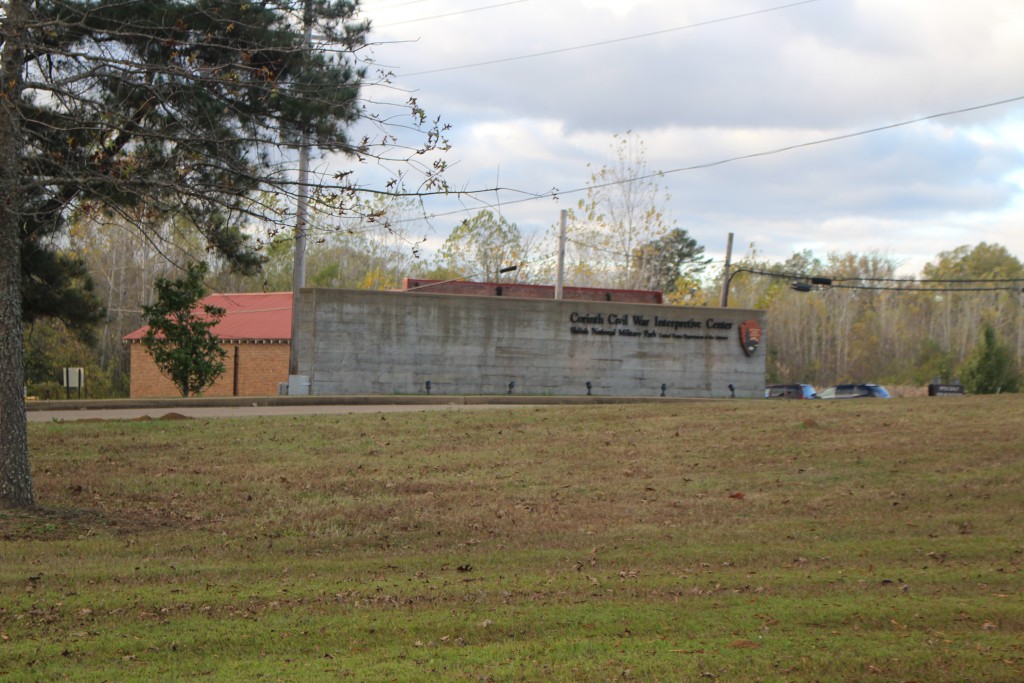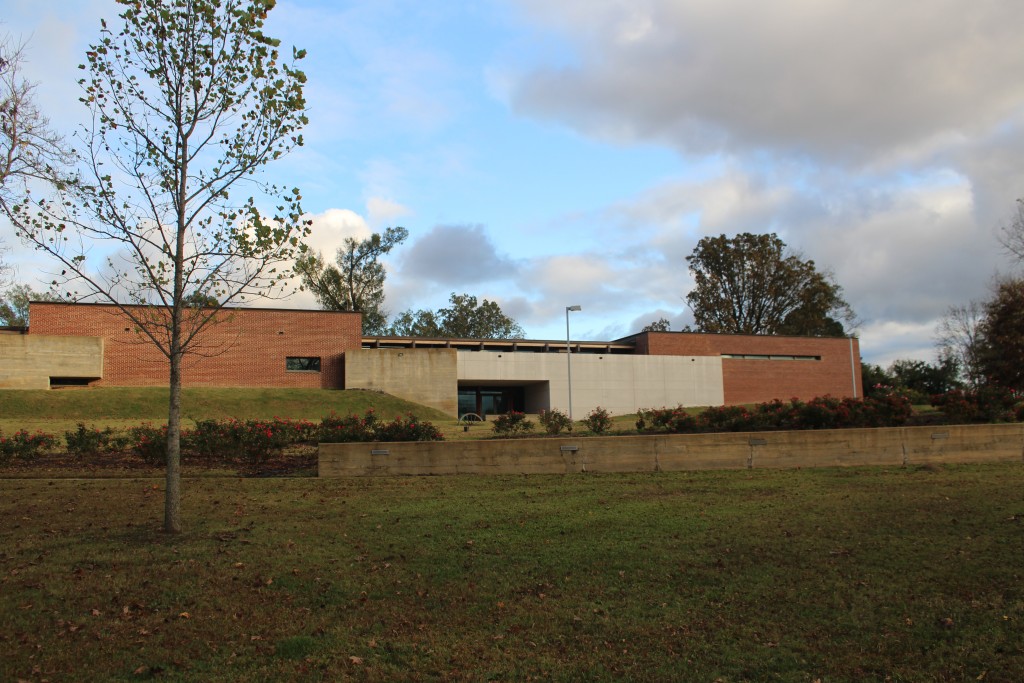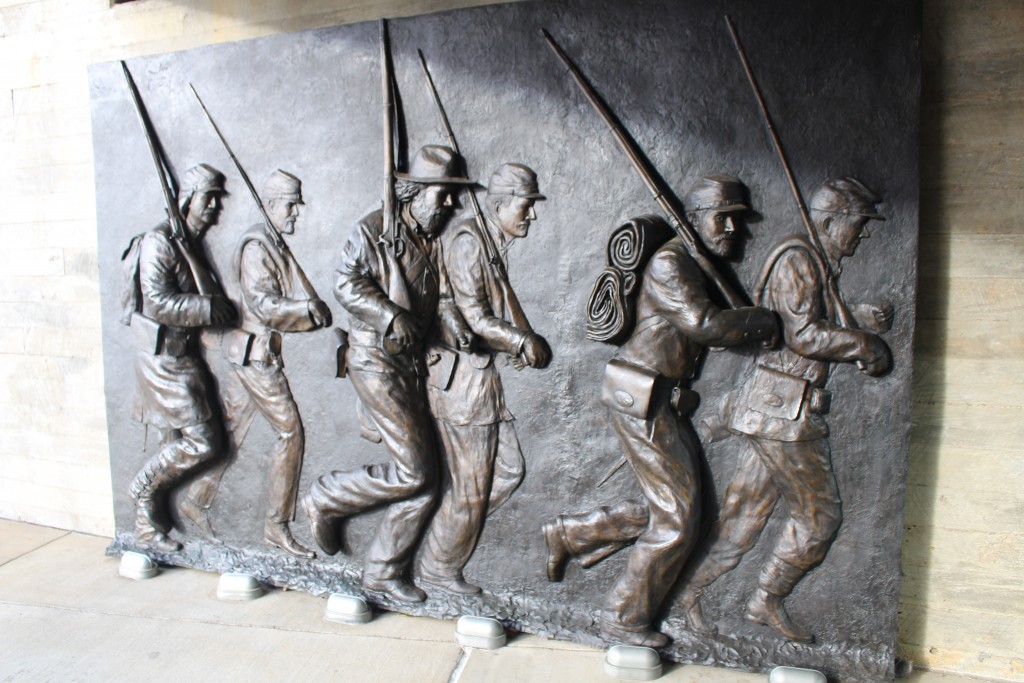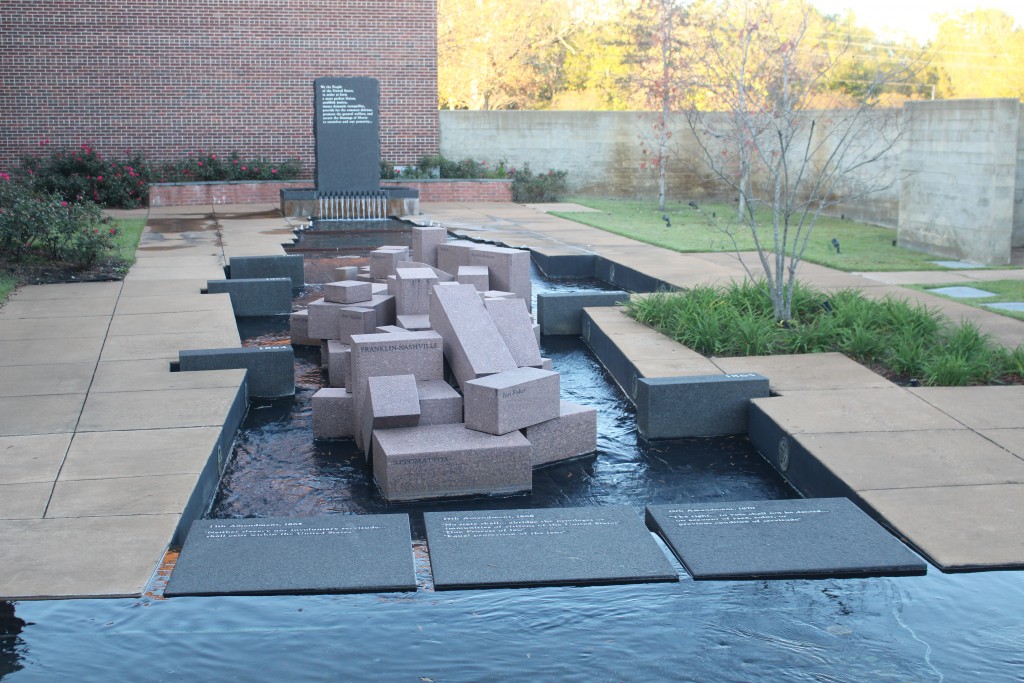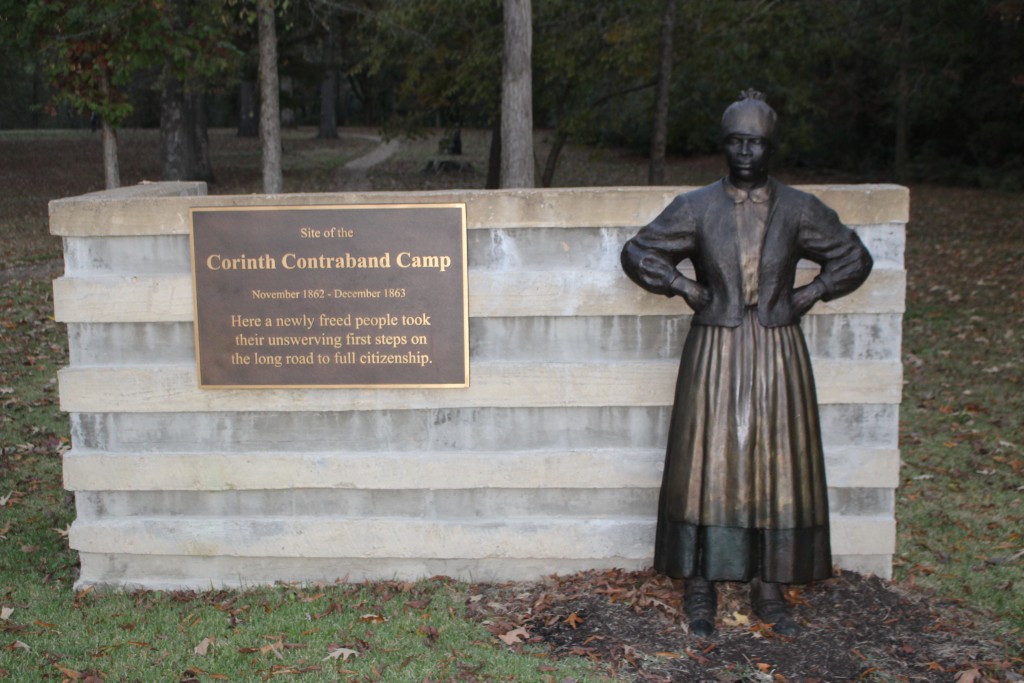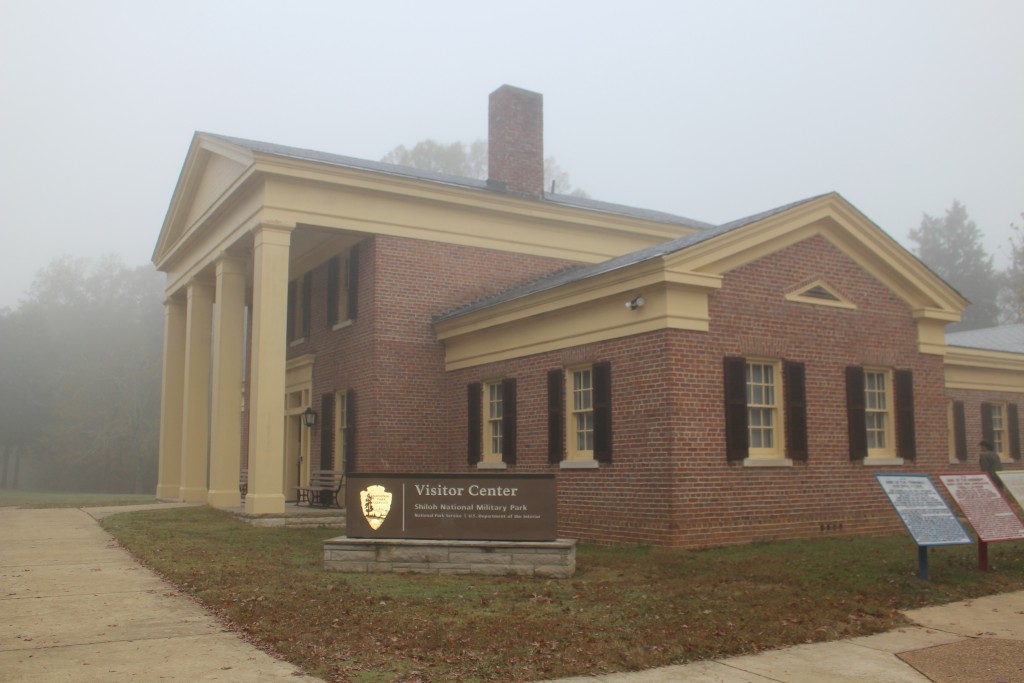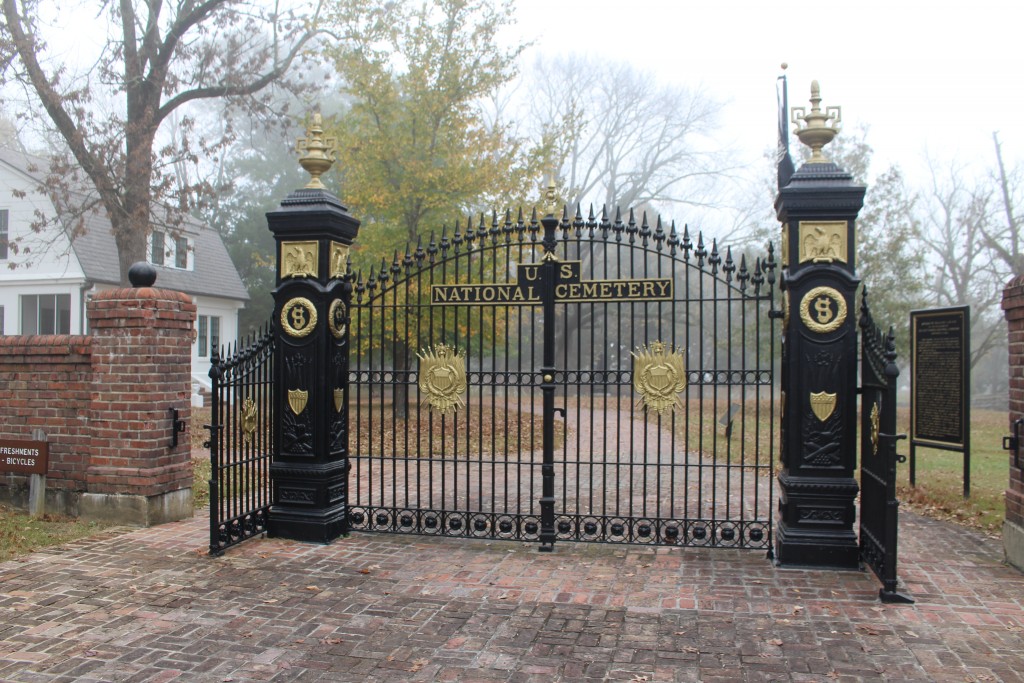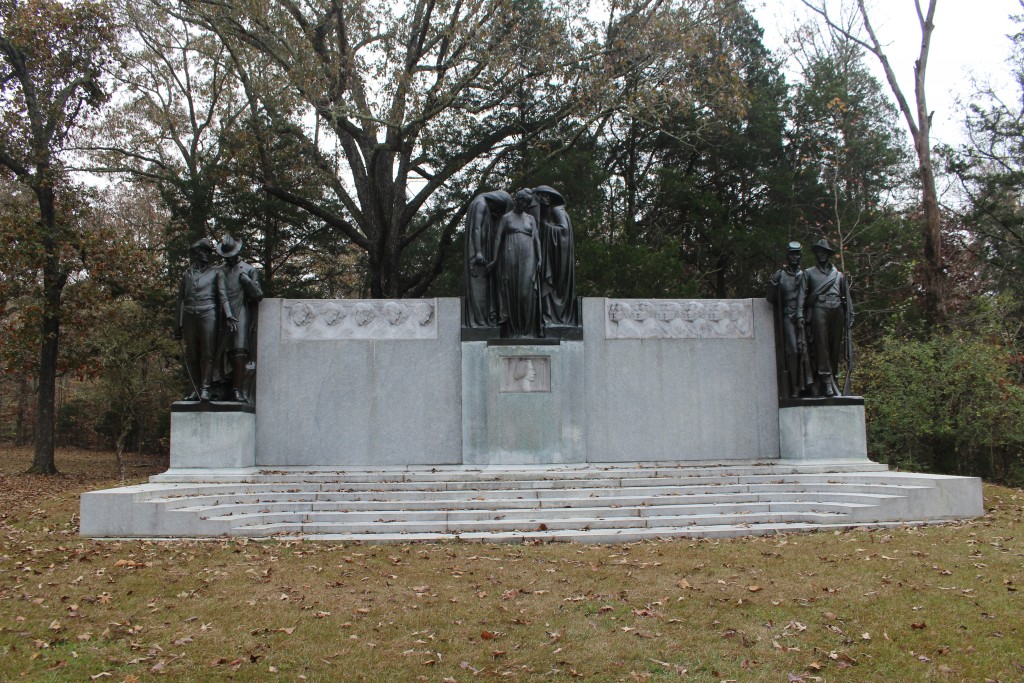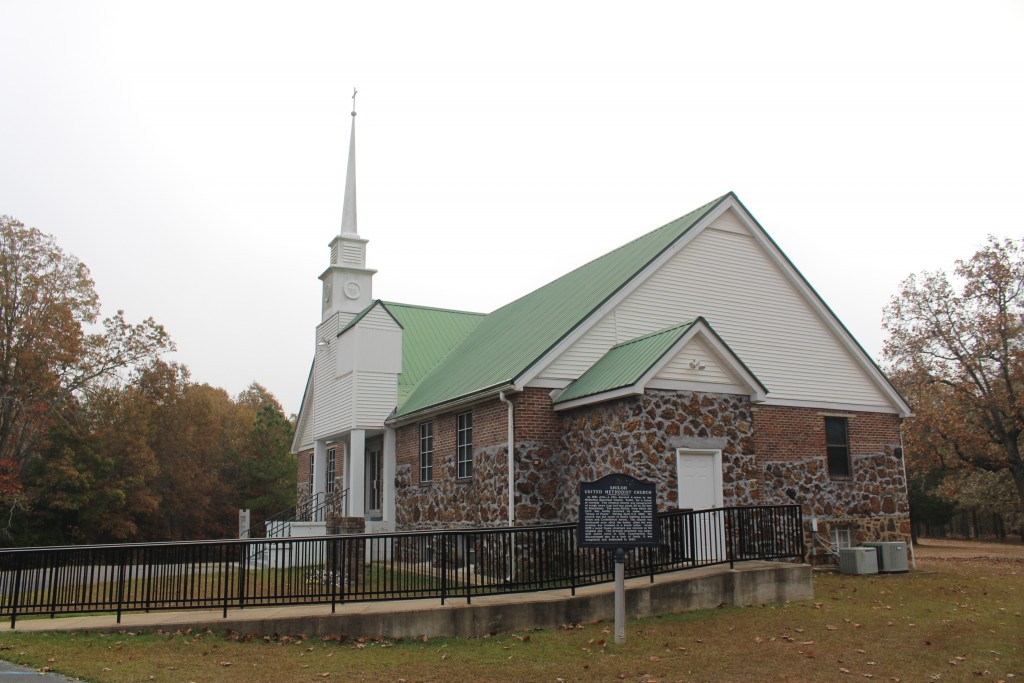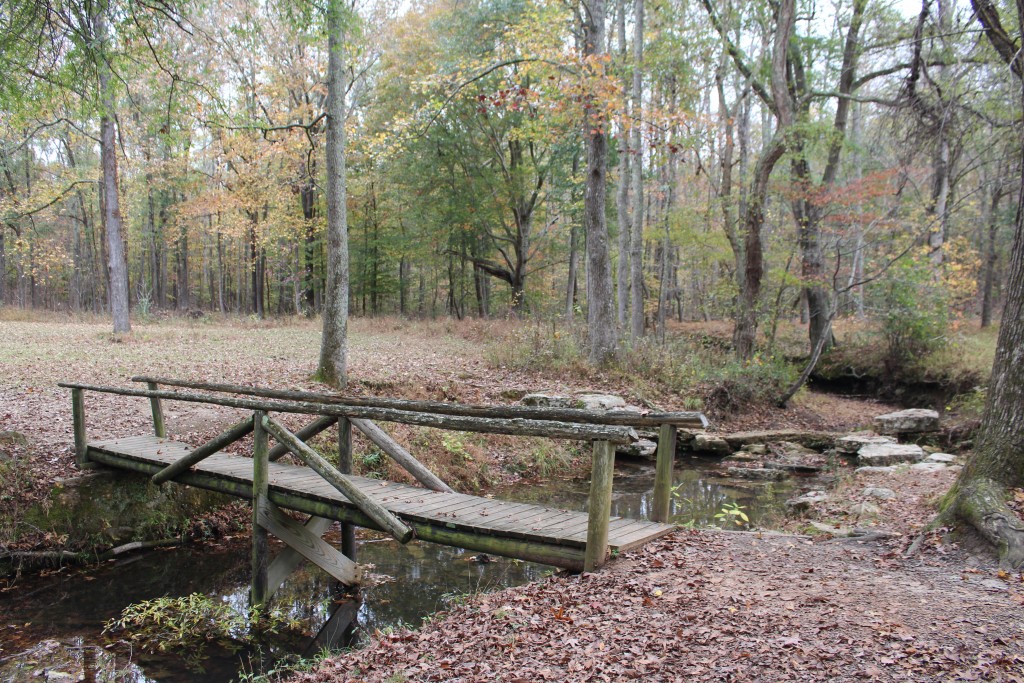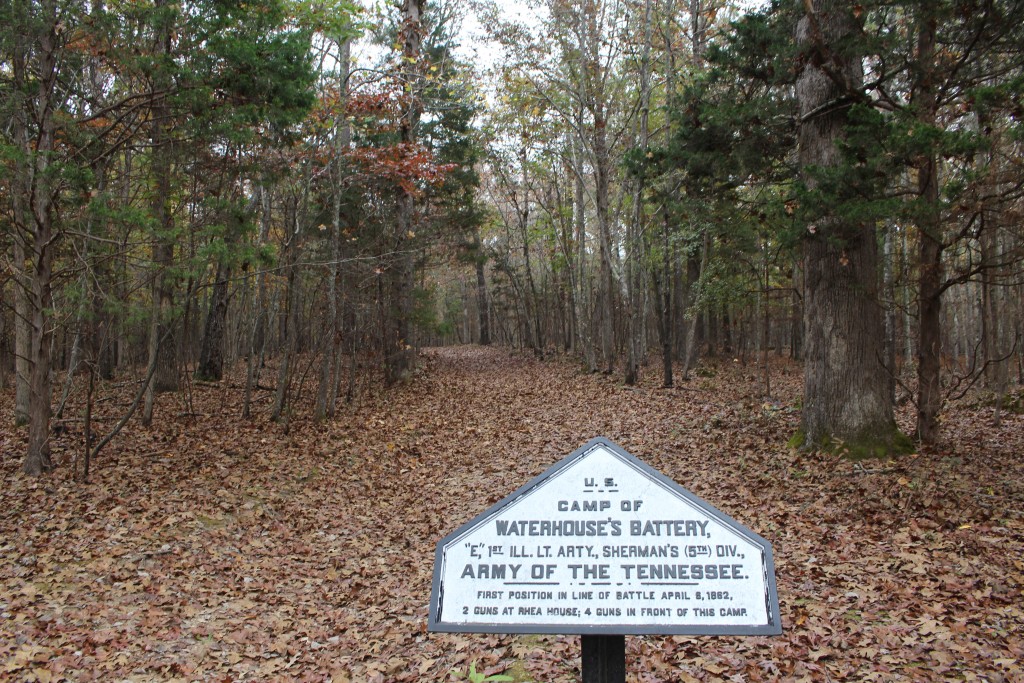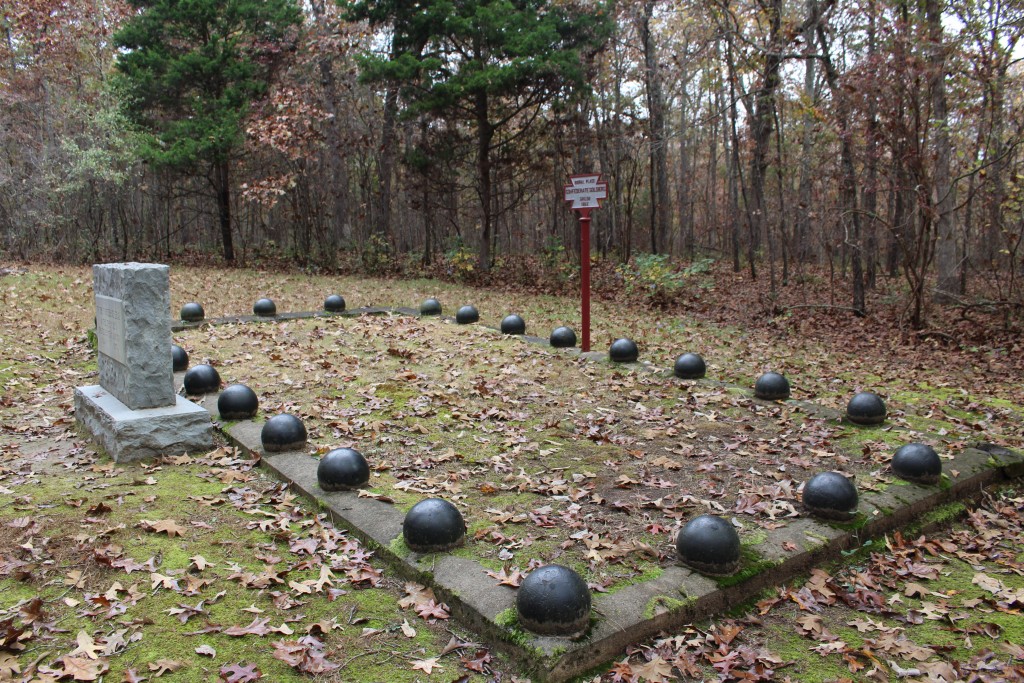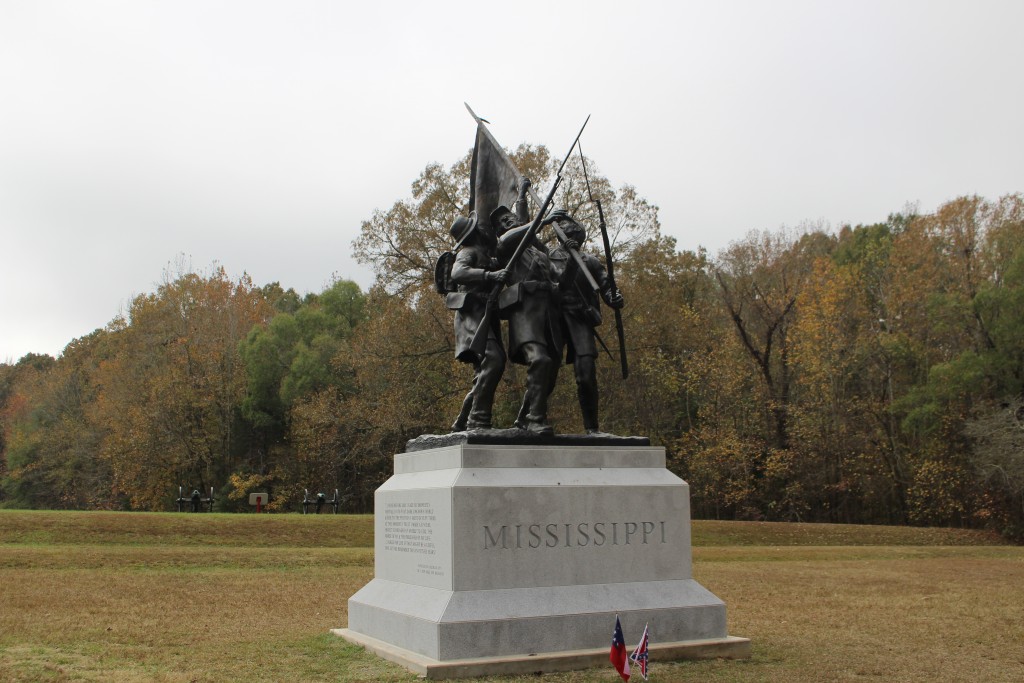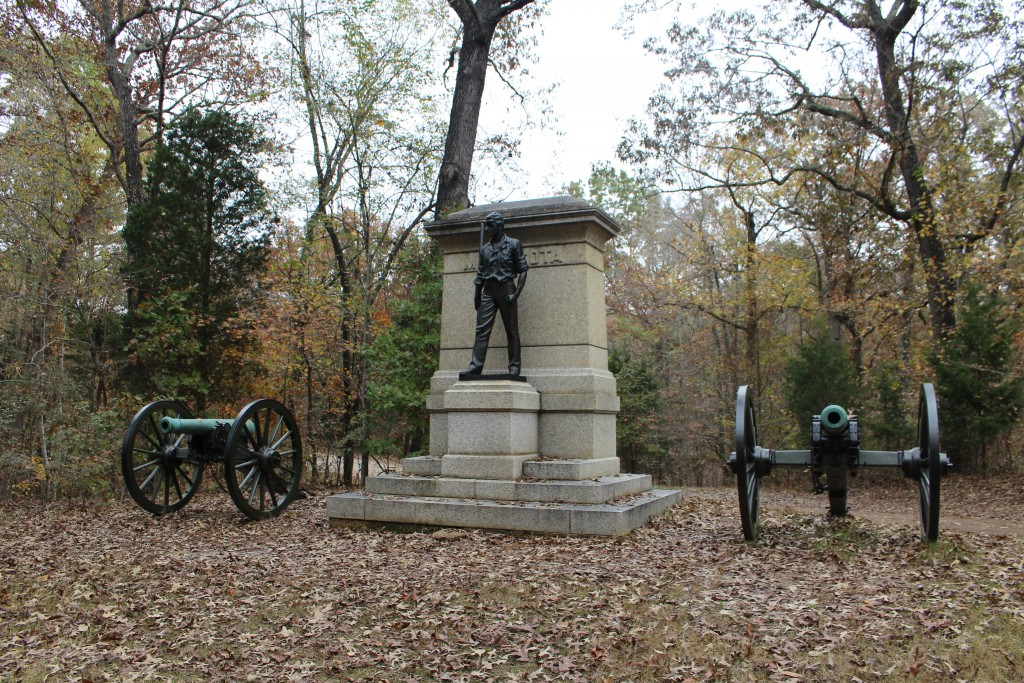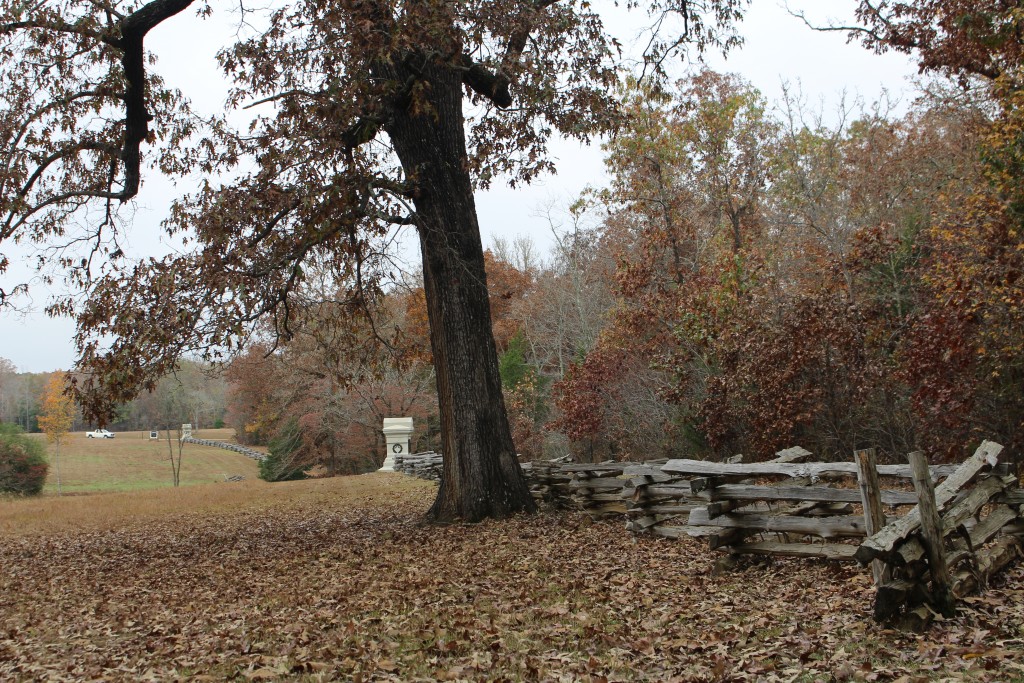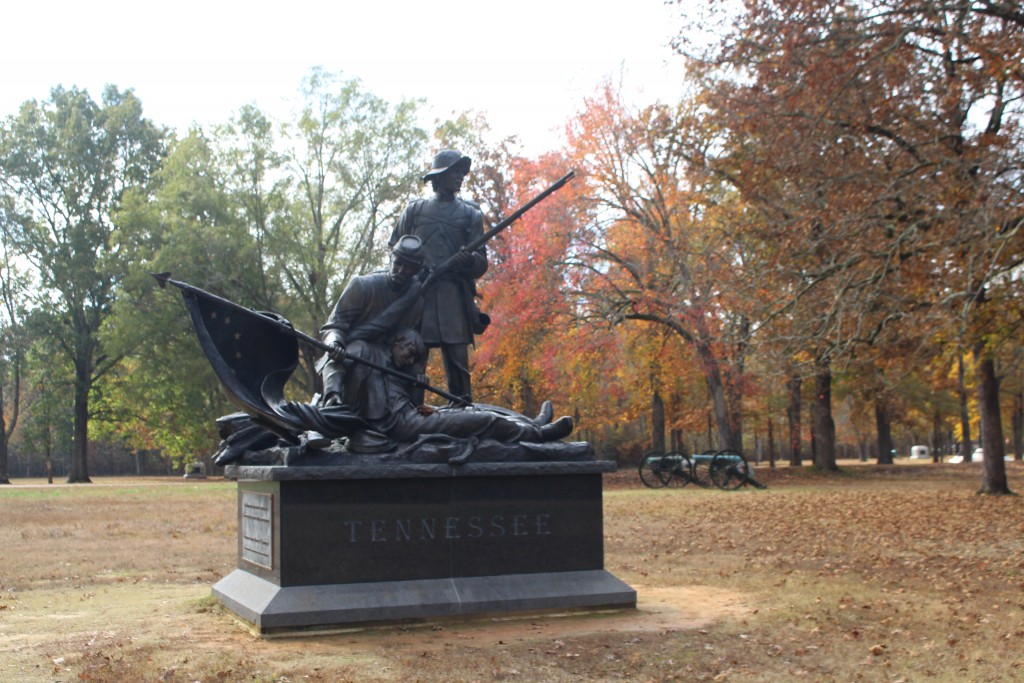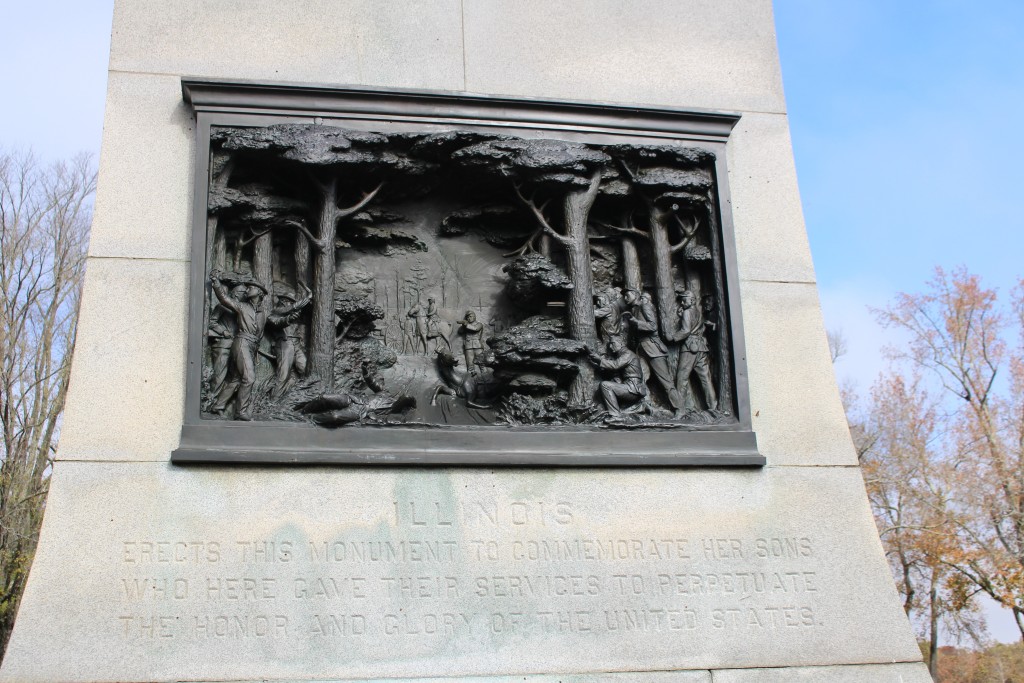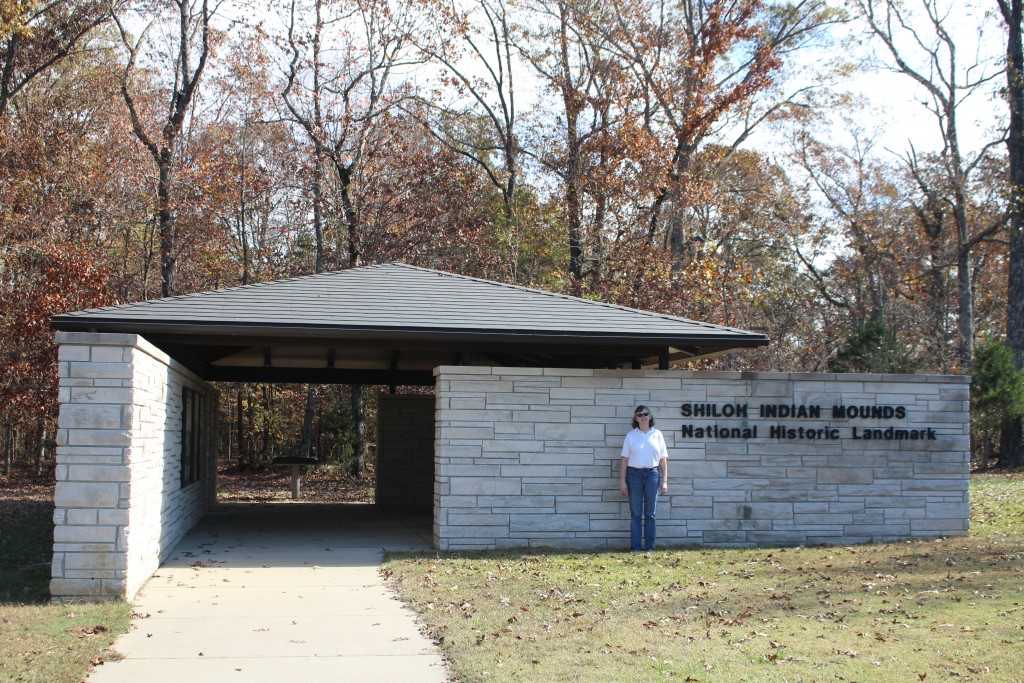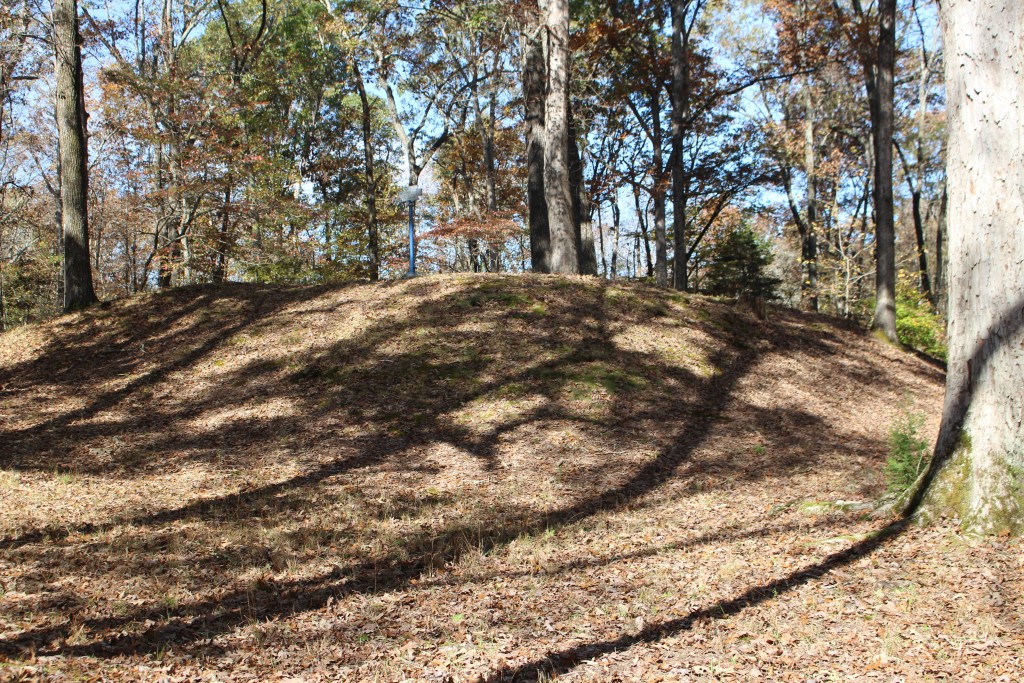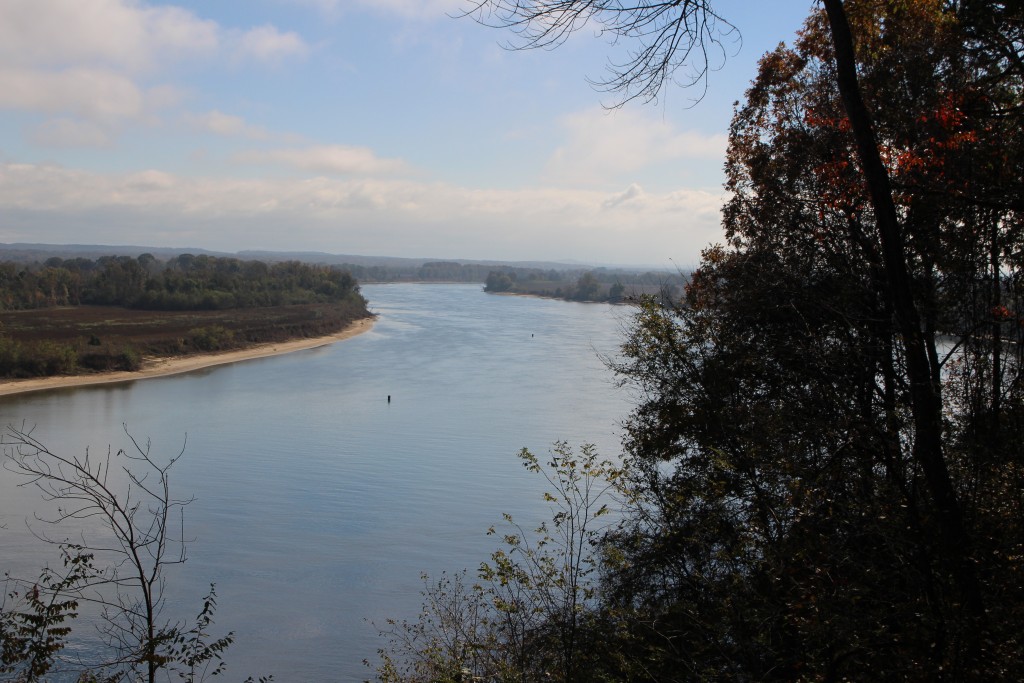While Tom and I were on our recent road trip, we stopped by Shiloh National Military Park. Shiloh was part of the western theater of the Civil War and was one of the first big battles, taking place in April 1862. It is also cited as the battle that taught Americans that the Civil War would be long, bloody and very costly. Over 100,000 Union and Confederate soldiers fought at Shiloh with the result that more men were killed in one battle than had been killed in all the wars Americans had fought previously.
Shiloh is very similar to Chickamauga and Chattanooga because the one military park had more than one battle and many diverse sites are part of the park. We stopped first at Corinth, which was actually the second battle covered by the park.
Corinth has a beautiful Visitors Center but not much of a battlefield around it. Corinth was an important railroad center for the Confederacy and was occupied by Confederate troops from the first days of the war. After the battle at Shiloh, Corinth became a Confederate hospital center, and then was occupied by the Union forces when the Confederates withdrew. In October of 1862, Confederate troops led by General Van Dorn tried repeatedly to retake Corinth. The Union troops held the town behind heavy fortifications and the Confederates were repulsed.
The Visitors Center was low on facts and heavy on symbolism. There was a water feature that needed a two-page brochure to explain all the symbolism in it. There were several monuments in the city block but not much interpretation of the battle. The thing I found most interesting in Corinth was the Contraband Camp. The battles of Shiloh and Corinth were before the Emancipation Proclamation. But escaped (freed) slaves sought out the Union army whenever it was close. In Corinth they were put into an area called the Contraband Camp (they were contraband – “spoils of war”) where they established a church, a school, raised their own crops and worked for the Union Army. They were generally treated well by the citizens of Corinth, who had voted against secession. When the Union army left in 1863, most of the “contraband” went with them to Memphis where they did not fare as well.
We stayed in Corinth until dark, then headed to Shiloh, 20 miles away, the next morning. Shiloh (also called Pittsburg Landing) was the site of a bloody two-day battle in April, 1862. It was the first battle between the two main armies in the west: the Union Army of the Tennessee led by General Grant and the Confederate Army of Mississippi led by General Johnston. Grant had and his army had ridden steamships down the Tennessee River, disembarking at Pittsburg Landing. He was told by his commanding officer, General Halleck, not to engage the Confederates until he was joined by the Army of the Ohio led by General Buell. So he set up camp at Pittsburg Landing.
General Johnston was not waiting in Corinth with his army. He decided to go on the offensive, and caught Grant’s troops by surprise on the morning of April 6 at Shiloh (Place of Peace) Church. After a hard day of fighting, Grant’s troops had been pushed back toward the landing. Johnston was killed in action and General Beauregard took over, considering the day to be a great victory for the Confederates.
The next morning Beauregard anticipated the Union army would have fled back across the Tennessee River, so he sent his men in to do a “mop-up” operation. Overnight, however, General Buell’s troops had arrived and when the Confederates appeared, they were met with an attack just as ferocious as the previous day. The depleted Confederate army could not win against this reinforced Union force and they eventually withdrew to Corinth.
Tom and I watched the movie in the Visitors Center (the best movie we have seen at a Civil War Visitors Center) and then took the driving tour of the battlefield. We saw the Shiloh Church, the Peach Orchard, and the Hornet’s Nest: all places with heavy fighting. The monuments around the battlefield are beautiful and poignant. The Confederate Soldier’s monument is another one that is heavy on symbolism but still stunning.
We also took the trail that led around the Indian Mounds. Pittsburg Landing was the site of an active Mississippian Mound Builder Culture long before the Civil War and there are mounds (some used in the battle) that remain on the bluffs high over the Tennessee River.
Once the fog burned off it was a beautiful, sunny day and Tom and I enjoyed seeing another area that was a key location for the Civil War. We like comparing the parks, although each one is unique. They are also all the same: in this place many men died defending their country and their beliefs.

